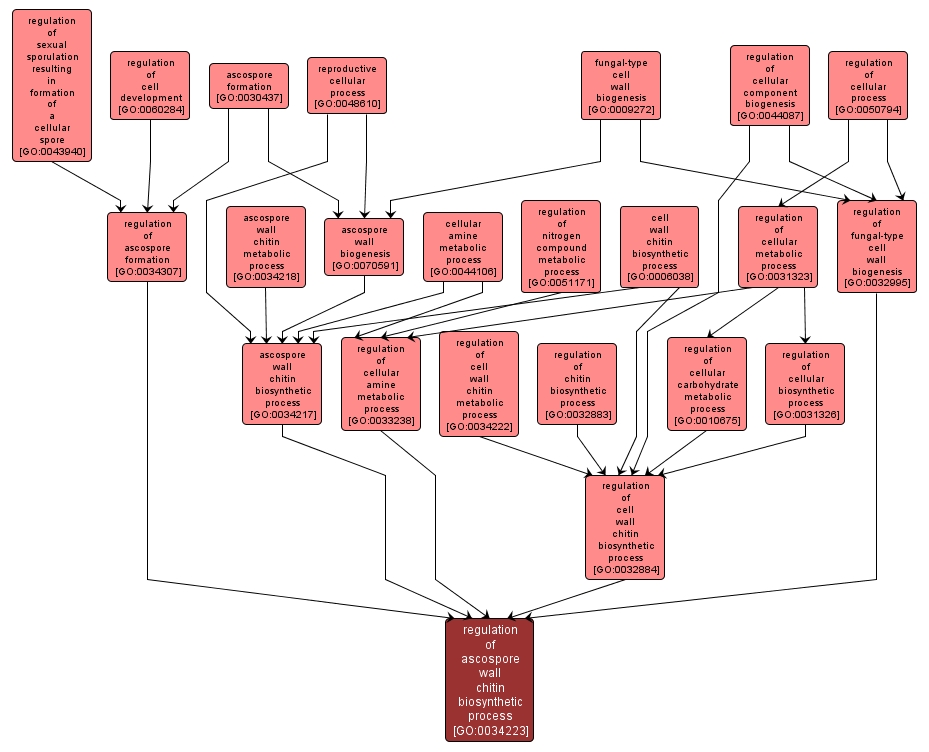GO TERM SUMMARY
|
| Name: |
regulation of ascospore wall chitin biosynthetic process |
| Acc: |
GO:0034223 |
| Aspect: |
Biological Process |
| Desc: |
Any process that modulates the frequency, rate or extent of the chemical reactions and pathways resulting in the formation of ascospore wall chitin. |
Synonyms:
- regulation of ascospore wall chitin formation
- regulation of ascospore wall chitin synthesis
- regulation of ascospore wall chitin anabolism
- regulation of ascospore wall chitin biosynthesis
|
|

|
INTERACTIVE GO GRAPH
|














